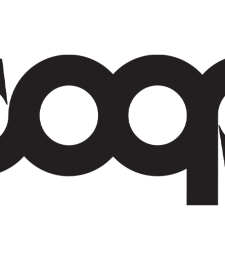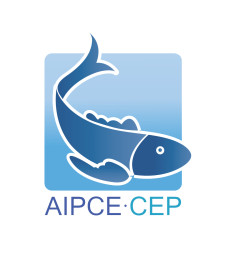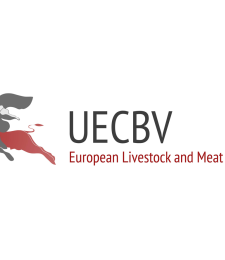Pledges
ASSICA (2021)
Pledges
Publishing organisations:
Editorial team
Relevant countries:
Italy
Organisation types:
Industry Associations and Chambers of Commerce
Next progression check date:
ASSICA, Italian Meat Manufacturers’ Association, is the national trade organisation that within Confindustria, represents deli meats production Businesses (pork and beef), pig slaughtering, and processing of other meat products. Since 1946, ASSICA has supported the growth of Member Companies, aiding one of the historic Italian food sectors to proactively address Italian and global challenges of change.
Editorial team
Topics
Italy
Industry Associations and Chambers of Commerce
-
CoC aspirational objectives
-
-
1. Healthy, balanced and sustainable diets for all European consumers
-
3. A climate - neutral food chain in Europe by 2050
-
4. An optimised circular and resource-efficient food chain in Europe
-
5. Sustained, inclusive and sustainable economic growth, employment and decent work for all
-
6. Sustainable value creation in the European food supply chain through partnership
-
Share
Commitments by aspirational objectives
Aspirational objective 1: Healthy, balanced, and sustainable diets for all European consumers, thereby contributing to:
1) Reversing malnutrition and diet-related noncommunicable diseases (NCDs) in the EU.
2) Reducing the environmental footprint of food consumption by 2030.
With the following aspirational targets:
a) Improved food consumption patterns in the EU.
b) A food environment that makes it easier to choose healthy and sustainable diets.
ASSICA commitments:
Made Green in Italy represents a certification system that can be used on the label for Companies that produce sustainably.
Promote the “Made Green in Italy” model to Member Companies and support them in the improvement process required for corporate membership.
Reduction of fat and salt, etc. compatible with the production specifications and regulations.
Production of deli meats suitable for celiacs and lactose intolerant people, etc. compatible with production specifications and regulations.
Use of minimum essential quantities of nitrites and nitrates to ensure food safety.
Aspirational objective 3: A climate-neutral food chain in Europe by 2050
With the following aspirational target:
Reducing net emissions from own operations, contributing to a 55% GHG emission reduction target in the EU food chain by 2030 (following a science-based approach).
ASSICA commitments:
Sourcing from local suppliers to reduce CO2 emissions related to logistics.
Inclusion of questions concerning CO2 emissions in the supplier assessment questionnaire.
Cogeneration plants fed with rendering and natural gas plants, which allow the recovery of heat produced.
Complete renovation of factories with new curing rooms, new plants, and an enthalpy system, which allows the curing rooms to exploit outside air in a rationalized manner, based on the climatic conditions, helping to reduce the environmental impact and consumption.
Photovoltaic system producing over 80% of energy needs. Research next-generation solutions to reduce consumption due to summer refrigeration.
100% renewable energy contract. All-round monitoring of resources and emissions.
Progressive replacement of lights with LED lights. Inverters on the motors. Constant reading of energy consumption on the “energy team” platform. Energy audits.
Insertion of questions relating to energy efficiency in the evaluation questionnaire submitted to suppliers.
Employee awareness on machinery shutdown. Objective: develop guidelines for workers.
Installation of monitors at the entrance to the site to show the amount of energy produced by the congenator.
Aspirational objective 4: An optimised circular and resource-efficient food chain in Europe
With the following aspirational targets:
a) Improved resource efficiency within own operations, contributing to sustainable, efficient use and management of energy and natural resources in operations by 2030.
b) Improved sustainability of food and drink packaging, striving for all packaging towards circularity by 2030.
ASSICA commitments:
Internal biogas generator and operating for several years.
Collection of waste and by-products resulting from slaughter and the commercial farm: through their fermentation, the gas generated is used to attain self-sufficiency of the factory.
Projects and synergies with universities focusing on the reuse of “Animal By-Products” in pet food production.
Targeted analyses to trace the origin and quantity of waste to identify action areas.
Participation in the “Ocean Waste Packaging” Project: a collection of plastic from the oceans, to compensate for the use of virgin plastic in packaging.
Closed water cycle, purification of internal waters. Improvement of water flows.
Communication on the label: e.g., design of a new environmental label where the packaging creation process is explained (FSC, recycled paper).
Research on plastic materials most compatible with environmental requirements.
New range of PET trays: already engineered, recyclable, and soon also recycled.
Use of FSC-certified paper and cardboard: trays with reduced use of plastic or at least 40% recycled plastic (re-PET).
75% integration of paper packaging.
Aspirational objective 5: Sustained, inclusive, and sustainable economic growth, employment, and decent work for all
With the following aspirational targets:
a) Improved resilience and competitiveness of companies operating at any point along the food value chain by 2030.
b) Quality jobs, skilled workforce, and safe and inclusive workplaces for all.
ASSICA commitments:
Creation of a platform dedicated to the collection of workers’ needs and to host various types of training courses (professional and related to personal growth).
Continuous training entrusted to the more experienced workers for the benefit of younger resources in the spirit of generational exchange.
Collaboration with local educational institutes (universities, high schools and schools), internships, and R&D project agreements.
System of “remuneration of ideas” to encourage workers to contribute to the development of the Company, with innovative ideas.
Introduction of criteria linked to sustainability and social responsibility for the evaluation of collaborators.
Welfare program for workers and free medical check-ups for employees over 50.
Creation of work environments, where possible, that are functional to the well-being of the employee, (including large windows, and ergonomic seating).
Annual events dedicated to the families of workers who visit the factories and participate in other sharing events.
Staff internal training concerning sustainability principles to align everyone on corporate values and guidelines.
Training programs with an annual plan, moving from the basics to the identification of internal best practices.
Aspirational objective 6: Sustainable value creation in the European food supply chain through partnership
With the following aspirational targets:
a) Improved resilience and competitiveness of companies operating at any point along the food value chain by 2030.
b) Continued progress towards sustainable production, contributing to sustainable management and efficient use of natural resources by 2030 and improved animal welfare.
ASSICA commitments:
Stakeholder assessment: Webinar with company stakeholders—including suppliers—aimed at reviewing the charter of values.
Involvement of corporate stakeholders: Focus on new actions to be taken at a strategic level.
Creation of a campaign: Partnership with “Too Good to Go” for the initiative called “Etichetta Consapevole” (Label Awareness). The aim is to inspire, educate, and provide consumers with tools to properly read food labels, reducing waste in daily routines.
Collaboration with local businesses in the social field:
Recruitment of employees from a cooperative for persons with disabilities.
Organization of activities with solidarity banks (e.g., food donation).
Purchase of groceries from non-profits to be included in products sold, with proceeds donated to charity.
Donation of machinery to medical associations.
Implementation of the corporate Code of Ethics: Following the model according to Italian Legislative Decree 231/2001.
Giving food surpluses to the non-profit organization “Banco Alimentare.
Motivate member Companies to ensure animal welfare during slaughtering according to the EFSA 2020 opinion and to monitor virtuous practices along the supply chain.
Full detail of the pledge in the provided attachment.
Documents
Comments (0)
See also
-
9
ANCC COOP Italy (2021)
Publishing organisations: ANCC COOP ITALIA
Relevant countries: Italy
Organisation types: Industry Associations and Chambers of Commerce
Next progression check date:
- Categories
- 2. Prevention and reduction of food loss and waste 3. A climate - neutral food chain in Europe by 2050 4. An optimised circular and resource-efficient food chain in Europe +3 more
-
4
AIPCE CEP (2021)
Publishing organisations: AIPCE CEP
Relevant countries: Belgium
Organisation types: Industry Associations and Chambers of Commerce
Next progression check date:
- Categories
- 2. Prevention and reduction of food loss and waste 3. A climate - neutral food chain in Europe by 2050 4. An optimised circular and resource-efficient food chain in Europe +3 more
-
2
UECBV (2021)
Publishing organisations: UECBV
Relevant countries: Belgium
Organisation types: Industry Associations and Chambers of Commerce
Next progression check date:
- Categories
- 2. Prevention and reduction of food loss and waste 3. A climate - neutral food chain in Europe by 2050 4. An optimised circular and resource-efficient food chain in Europe +3 more




